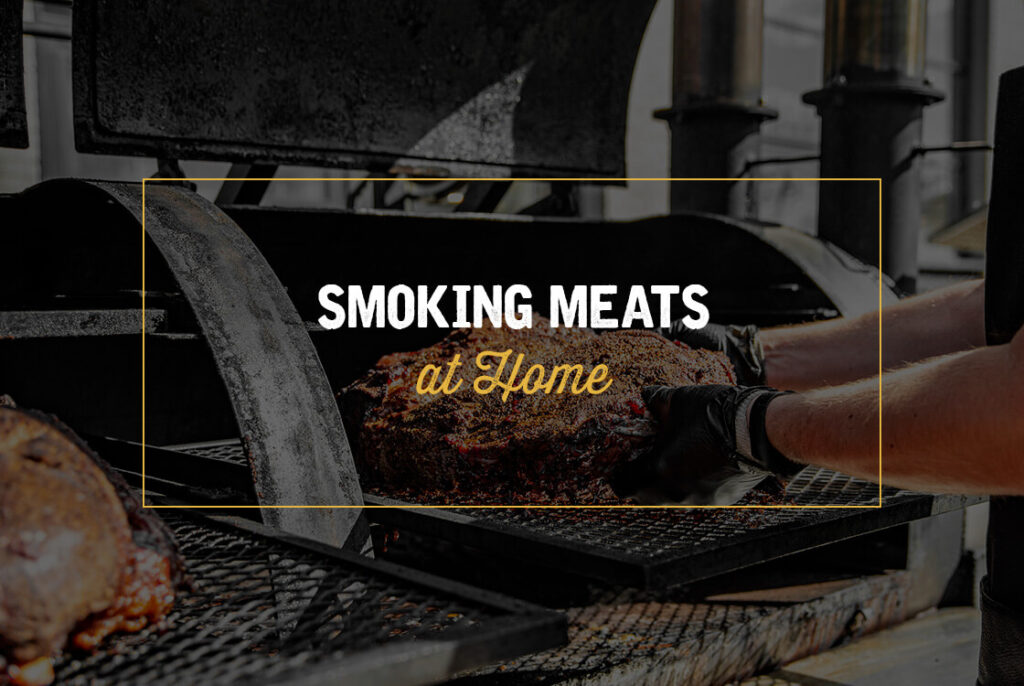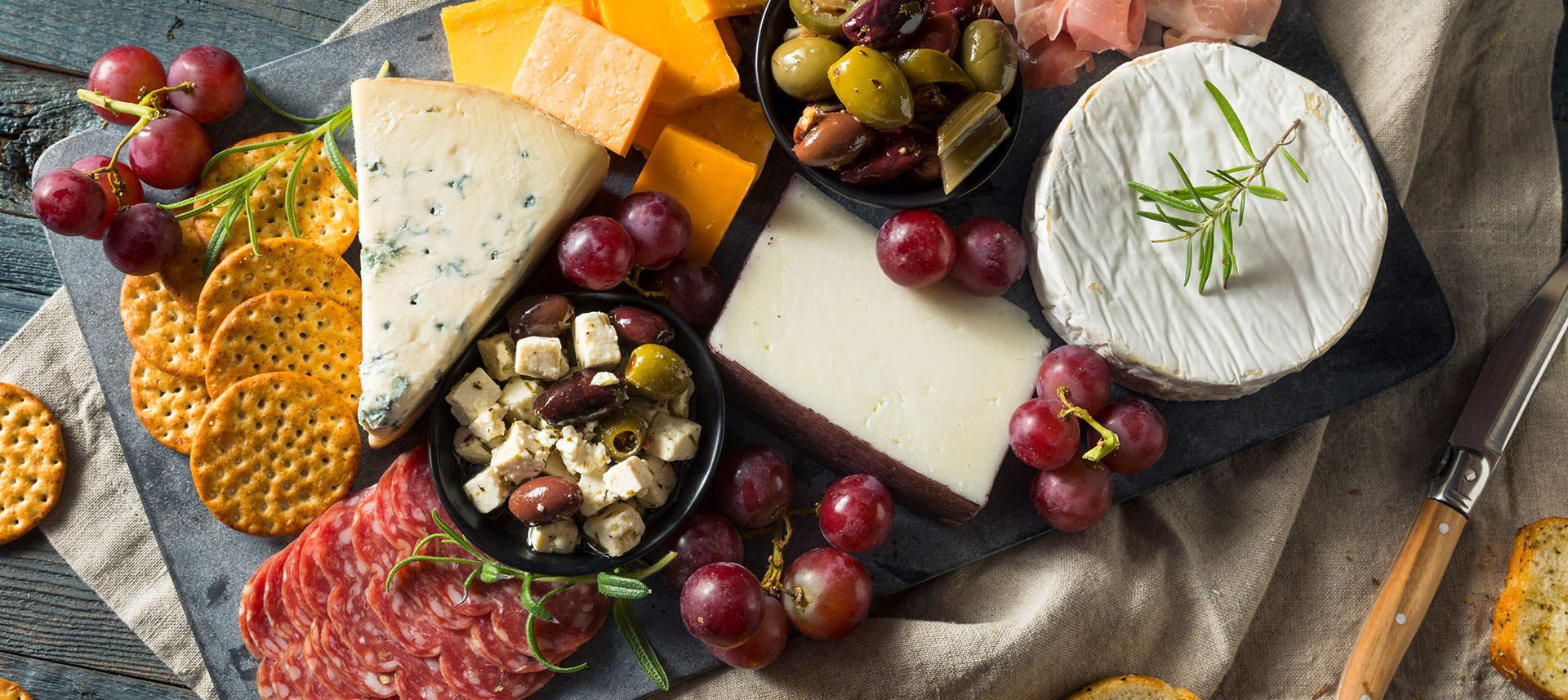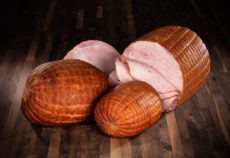
Whether you’re new to cooking or already know your way around the kitchen or grill, smoking meat promises a whole new world of tender textures, rich aromas and mouthwatering tastes. The low, slow smolder of the wood tenderizes your favorite cuts of meat while infusing them with unique, smoky flavors. Smokers are available at various price points, and you can even do a passable job of smoking meat on a regular grill if you don’t have a smoker yet.
Anyone can learn to smoke meat at home, though becoming a master smoker requires plenty of practice and knowledge of the right ingredients, woods and methods to use. The practice is up to you, and you’ll taste the delicious results of your progress along the way, but everything you need to know to smoke meat at home is right here in this guide.
Why Smoke Meats at Home?
Compared to grilling, smoking is worth the extra time investment because smoked meat just tastes better. The flavors and aromas you can unlock by infusing smoke from carefully selected woods into your meat are rich, nuanced and delightful to the taste buds. Plus, smoking is unrivaled at achieving succulent, fall-off-the-bone tenderness. Other benefits of smoking include:
- Versatility: You can smoke any kind of meat, fish or even vegetables.
- Creativity: Smoking lets you experiment with various cuts, rubs, marinades and woods to create unique meaty masterpieces.
- Preservation: Smoked meat preserves better than grilled cuts, thanks to the antimicrobial effects of the smoke.
- Fun: Your friends and family will love gathering around the smoker for cookouts and other fun get-togethers.
1. Getting Started With Smoking Meat
Before you start smoking your meat, you’ll need a few things. Most importantly, you need to choose your smoker, meat and wood.
What Is the Best Type of Smoker?
The best type of smoker depends on your budget, lifestyle and preferences. Your main options if you want to smoke meat with a smoker are:
- Charcoal smokers: Using charcoal as fuel, these smokers create the classic smoky flavor but require more hands-on effort than pellet or electric smokers.
- Pellet smokers: These smokers use wood pellets to achieve a rich flavor and are easy to use, though they cost more than charcoal smokers.
- Electric smokers: These are the simplest to use and often automate temperature control. However, they may not deliver the same intense smoky flavor as charcoal and wood pellet smokers.
- Your covered grill: If you’re not ready to invest in a smoker, you can achieve similar results with your current grill, though this takes some extra effort.
What Are the Best Meats to Smoke?
Pork butt, turkey and brisket are three of the most delicious meats to smoke. Smoked well, all three absorb smoke deeply for a rich and succulent taste experience. Pork butt and turkey are especially straightforward and forgiving of longer cooking times, making them ideal smoking meats for beginners. Brisket is a great intermediate option once you’ve had a little practice, promising nuanced flavors and mouthwatering tenderness after a well-executed smoke. Other popular options include ribs, chicken and salmon.
What Are the Best Woods for Smoking?
The best wood for smoking is one that complements your meat, as each makes a distinctive contribution to the flavor:
- The best wood for smoking pork butt is hearty hickory or subtle, sweet apple.
- The best wood for smoking turkey is cherry for vibrant tartness, apple for a fruity aroma or pecan for a festive touch of nuttiness.
- The best wood for smoking brisket is any lighter, sweeter wood like hickory, oak, cherry, apple or mesquite.
You can experiment with different combinations to find your favorite.
2. Preparing the Meat
Before you put your meat on the smoker, a few preparatory steps will help ensure a flavorful final product. First, choose your cut of meat. A cut with some fat will come out juicier than a very lean cut. A whole turkey, pork butt or firm brisket with some fat on top is ideal.
Then, marinade or season the meat to taste with your favorite herbs, spices or sauce. Try brining turkey for a full day, applying dry rub to brisket every few hours for a full day, or marinating pork butt for eight to 12 hours before smoking.
Finally, trim off any thick pieces of fat, but leave a thin layer to keep the meat succulent. For brisket and pork butt, make shallow cuts into the top of your cut to help the smoke penetrate. To ensure even cooking, take your meat out of your refrigerator and let it rest at room temperature for 30 minutes before smoking.
3. Smoking the Meat
It’s time to fire up the smoker and add your meat. Each type of smoker is different, so follow the manufacturer’s instructions to ensure you do it safely and correctly. To use a charcoal grill as a smoker, light the charcoal and let it burn to ash before placing a drip pan with water on one side and the meat on the other. For a gas grill, put soaked wood chips in a smoker box or foil pouch with holes poked in it, and place them over the heat.
How long it takes to smoke meat depends on the type of meat and the cut size. Here are some general recommendations:
- Pork butt: Smoke at 225-250 degrees Fahrenheit for an hour and a half per pound of meat, finishing at an internal temperature of 195-205 degrees for pulled pork butt or around 175-185 degrees for sliced pork butt.
- Whole turkey: Smoke at 225-250 degrees Fahrenheit for around 30-40 minutes per pound, finishing at an internal temperature of 165-175 degrees.
- Brisket: Smoke at 225-250 degrees Fahrenheit for an hour and a half per pound of meat, finishing at an internal temperature of 195-205 degrees for sliced brisket or 210 degrees for pulled brisket.
To achieve the perfect flavor and tenderness every time, use a timer along with your grill or smoker thermometer and a meat thermometer.
4. Resting the Meat
Before serving up your smoked meat, let it rest to redistribute the juices. This helps ensure the meat remains succulent after you slice it. Rest turkey for around 30 minutes, and brisket or pork butt for 30-60 minutes. Wrapping meat in foil can help keep it warm as it rests.
5. Serving and Enjoying Smoked Meats
Smoked meats are versatile and can add interest to any recipe you’d make with grilled meat. For the ideal complement to your rich, smoky meat, try zesty coleslaw, creamy potato salad or refreshing pickled vegetables. Tangy and creamy cheeses like aged cheddar, Swiss cheese and Gouda also pair well with smoked meats, allowing you to build charcuterie boards that delight the eyes as well as the taste buds.
Explore S. Clyde Weaver’s Smoked Meats
Learning to smoke your own meat at home is like becoming a skilled artist. It takes time, but with practice, you can create culinary masterpieces. And if you ever crave succulent meats smoked to perfection without the time investment, you can always get the taste you’re dreaming of from S. Clyde Weaver.
S. Clyde Weaver has been providing high-quality smoked meats for more than 100 years. Today, every product we sell reflects more than a century of experience perfecting our craft to bring you unparalleled flavor. Along with our mouthwatering beef, hams and other meats, we offer a wide selection of premier aged cheeses to complement those iconic smoked meat flavors. Wherever you are in the United States, we can ship our delicious meats and cheeses to you within two days.
Browse our store to find the legendary flavors your taste buds deserve.













